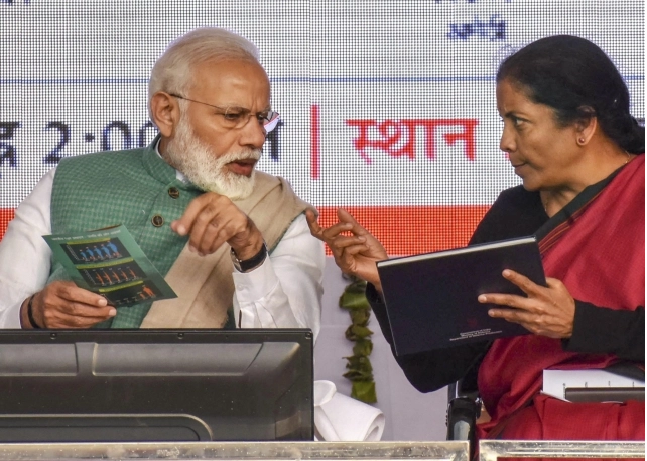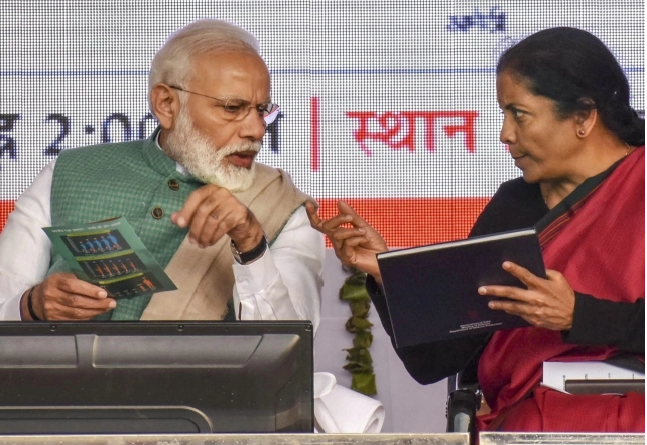2020-21 Union Budget: Multiple pricing cut, low prices, high growth are necessary

India has high expectation from the ensuing 2020-21 central budget. It wants growth, high demand, boost agriculture, lower prices and a feeling of happiness all around. Even the world depends on India to end the global economic slag, as the IMF chief economist Gita Gopinath hopes. She is candid. She told the World Economic Forum slowdown in India dragging down global economy. It has lowered global growth forecasts being lowered by more than 80 percent.The UN report of World Economic Situation Prospects (WESP) is not that hopeful. It says that growth of 2.5 per cent in 2020 is possible, but a flare-up of trade tensions, financial turmoil, or an escalation of geopolitical tensions could derail a recovery. In a downside scenario, global growth would slow to just 1.8 per cent this year.
Amid global and domestic expectations the Prime Minister Narendra Modi’s government has to do the best rope-trick because the WESP hopes that being the largest economy in the sub-continent when India revives South Asia average will look up. It has also to look beyond infrastructure for giving boost to the economy. Infra may have helped some large companies but not the citizens. So it has to remove multiple pricing on infra use. The globe is torn between escalation and de-escalation of trade tensions pushing down global trade growth to 0.3 percent. India is a victim as exports are falling. In such difficult world scenario, it is not easy to take all the flak that Modi government is taking. Would India start the process of de-globalization? Some experts view giving slip to the Regional Comprehensive Economic Partnership (RCEP) free trade agreement is the first process to changing the economic ties. The next logical step should be towards WTO that has made services expensive for the poor and taken toll on investment and exports. It is not an easy call for India to chart out the course. In the WTO regime, each move is somewhere linked to its agreements, which US President Donald Trump virtually calls shackles. He has already cut funding to WTO particularly to its dispute resolution mechanism. India has taken the first step to follow Trump in a different way. WTO bans farm subsidies. India has followed it but has announced Rs 6,000 annual pension to farmers. The farm sector definitely needs push. So does the rural sector. The NITI Aayog accepted the social development goal index-2019. It states that 25 states are witnessing increase in poverty, hunger and inequality. Some months back NSSO consumer survey report found that purchasing power of the rural poor is decreasing. It stated that the rural poor can spend mere Rs 19 for food. It means for over decades, the situation has not changed much.The prescription is to boost incomes of the rural farm and non-farm labourers. It is dependent on the revival of the agricultural sector. Farm incomes are at 15-year low.
Rural workers are not having adequate employment. Even the much touted MNREGA has not been of great help. Spending in the rural areas is declining. Unless it increases the demand surge not possible. The sector is important. Over 54 percent of the population is dependent on farms. The Rs 75,000 crore kisan pension scheme if doubled can increase money circulation. But that is not easy for a government, which has to tighten belt in the last January-March quarter to keep deficit in check. There are suggestions to levy some tax on farm products to support farm income support scheme. It is difficult at a time when food prices are surging at 7.6 percent inflation.An OECD-ICRIER report estimated that during 2014-16, farm revenues reduced 6 percent affecting incomes of farmers by about Rs 45 lakh crore. The kisan huts and reforms in APMC are yet to come up. The experiments in some clusters in Uttarakhand and Andhra Pradesh need budgetary support.In fact, most farmers depend on loans and many of them are in heavy debt. The farm sector needs attention but the hands of the government are tied.
One reason stated to be for the farm distress is severe check on cash transactions through income-tax and banking instrumentations post note-ban. It has constricted money flow. Direct or indirect questioning is treated by farmers and traders as harassment. Transactions through banks are stressing the banking sector as well as creating bottlenecks. It has increased costs and rural distress.This is surprising because cash circulation has increased by Rs 6 lakh crore since 2016. The obvious solution of boosting cash transaction is not being considered. The unusual fear of the black has stymied transactions, demand and development. People are receiving notices for their purchases. This further affects demand.Two sectors the insurance and mutual funds have become the most undependable. People find that their hard-earned money is being robbed. Along with this bad loans and instances of rising bank fraud are shaking confidence of the people.
The lowering of interest rates on savings has hit the poor, farmers, and every depositor. It must be raised to lubricate the economy through monetary policy revision. The Rs 25,000 crore bail-out package for real estate is yet to help the home-buyers. It is fraught with a risk of bank NPAs growing to quote IMF’s Gopinath. Every government action for giving boost is fraught with risk. Its concern for reducing government expenditure is real as it does not have finance. The constriction can lead to difficult scenario and rise of commodity prices.
The government has to look for ways to keep the prices in check not for the sake of the people but being the largest consumer to keep its expenses in check.
It needs to do away with severe multiple pricing as in the road, rail and banking sector through various kinds of fees, charges, cess and tolls. Each of it creates bottlenecks and increases prices. It has to have a relook at pricing petroleum. It has hit the economy hard through policies begun by the UPA government.
Each such careful cut would help the economy as for the same money more development and investments would be possible. It is an arduous but necessary task. People await a soothing budget for happiness, higher than 5.7 percent 2019 growth and become the global leader.




